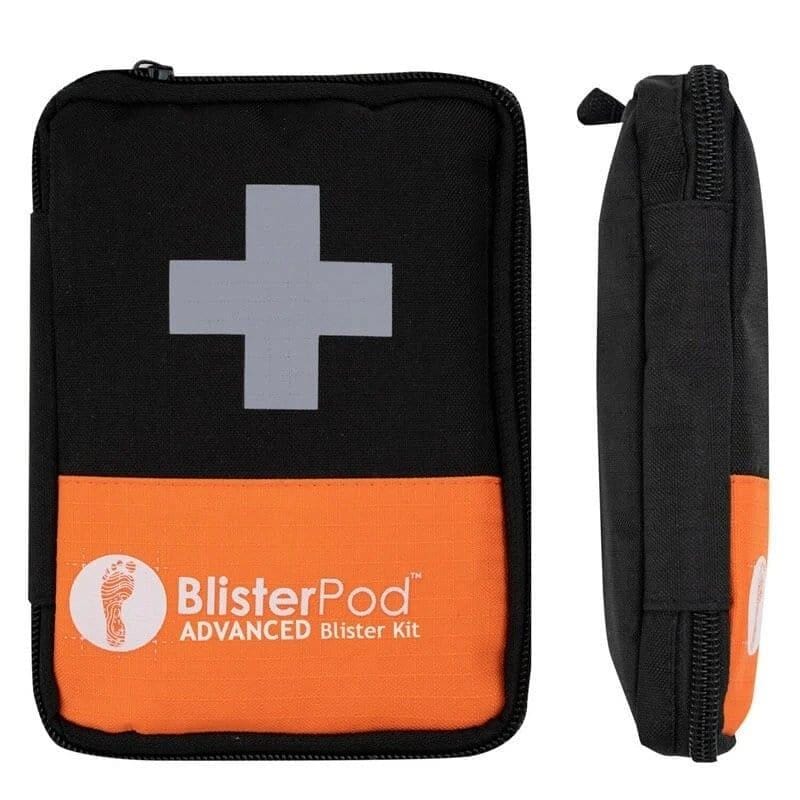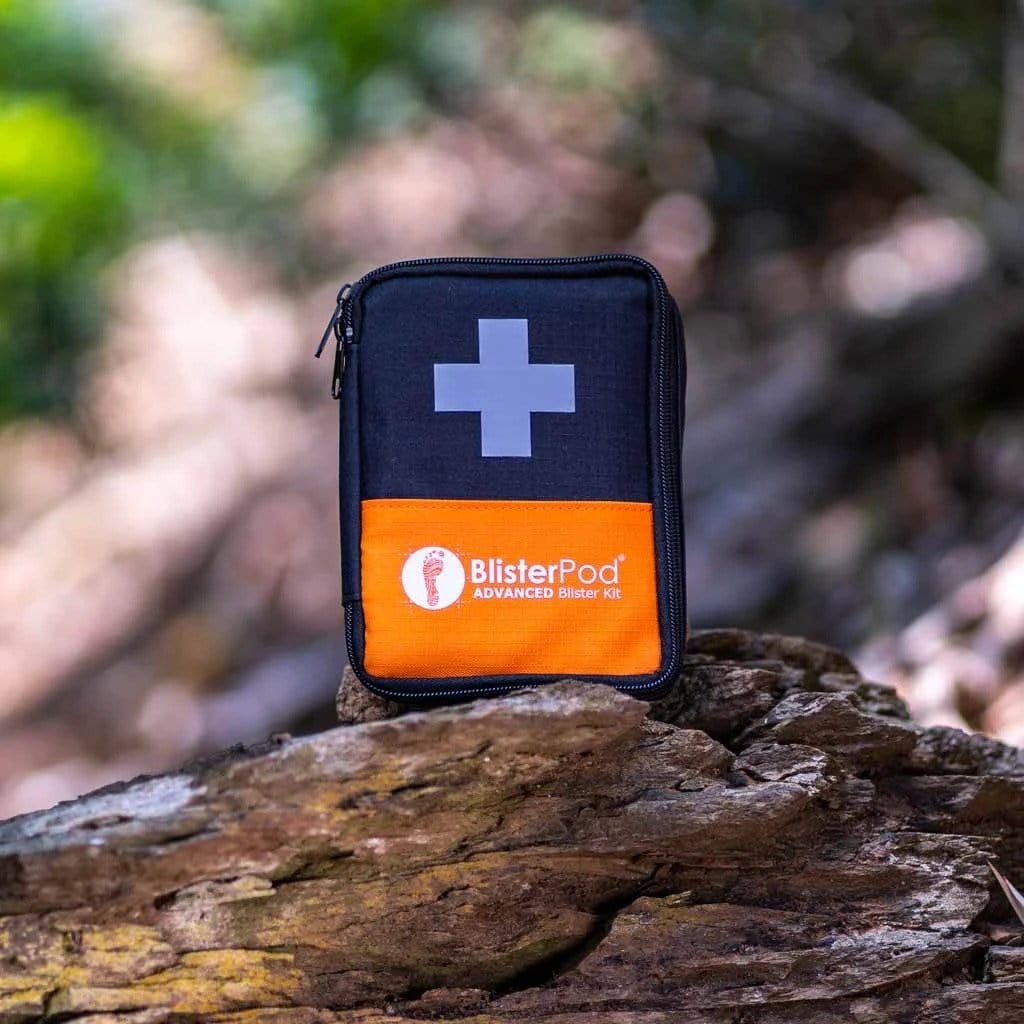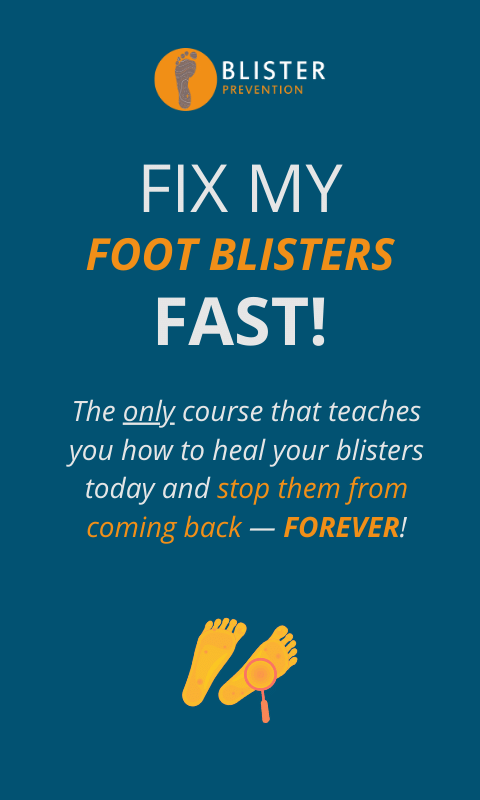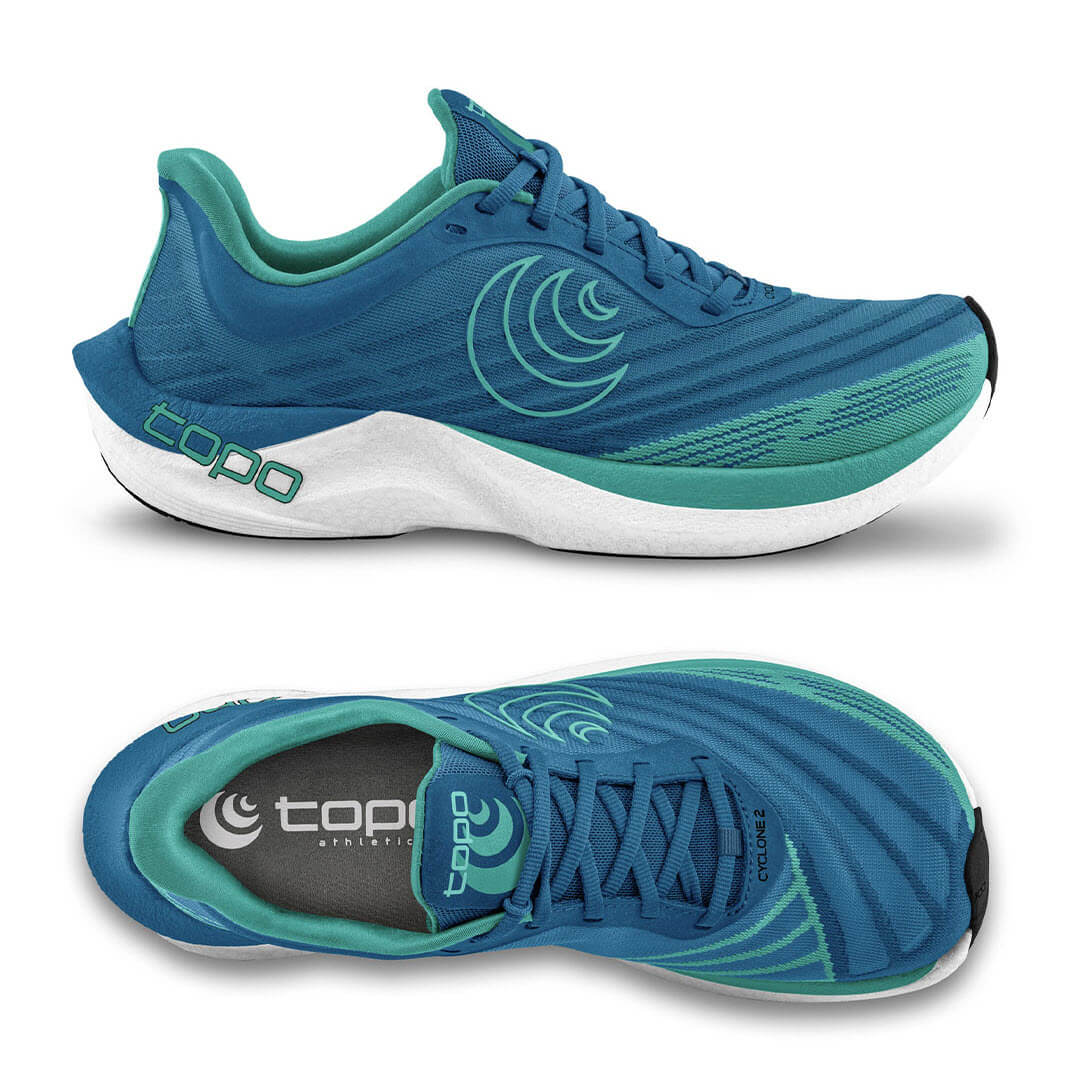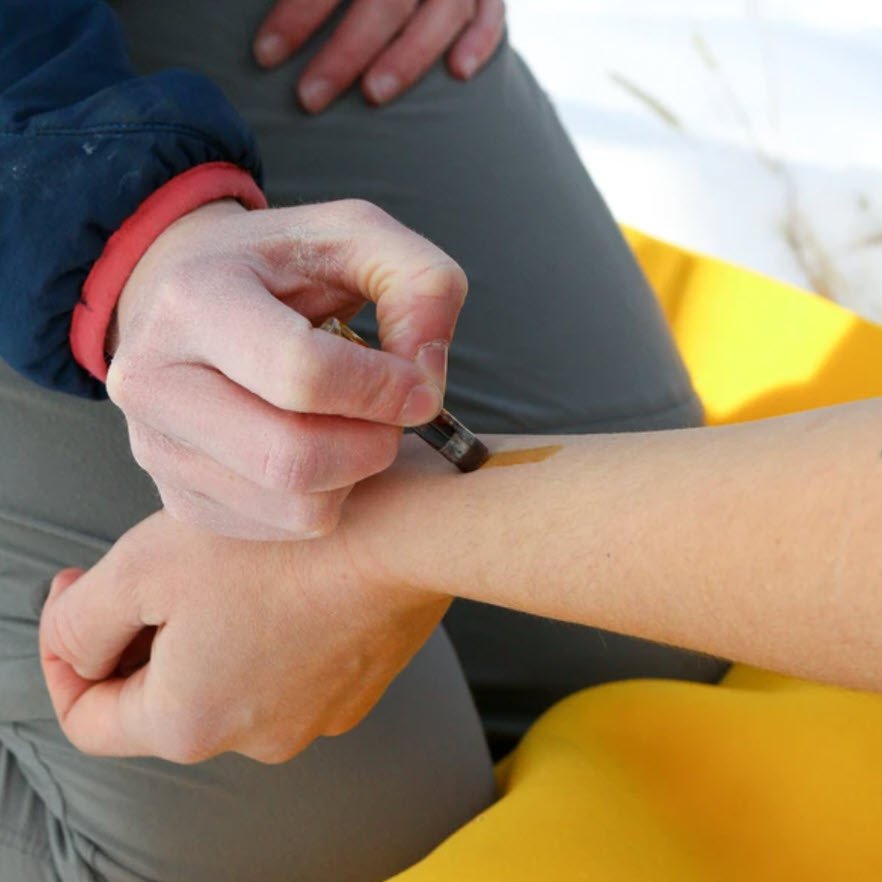Don't save your new shoes for race day. Don't pull a new pair of socks from their packet, or start anything new. This is the golden rule of race day.
This is never more true than for your blister prevention practises. The time for experimentation and trying new things has passed. Your new blister prevention intentions may have great science behind it, and glowing reviews. But don't:
- Save your new shoes for race day
- Pull a new pair of socks from their packet
- Start using a new kind of tape, or taping technique
- Try a lubricant instead of the usual powder you use
- Wear a shirt you don't usually run in
- Stretch your hammy a different way
You get my drift
Don't Change A Thing On Race Day
Break the golden rule of race day and you're setting yourself up for trouble. Introducing that new variable puts everything in doubt. Sure, it may be well-intentioned. But it's untested. It's unpredictable.
Here are the two most common changes I hear about.
New Shoes
Don't save your new shoes for race day. Even if they're the same brand and model of shoe you've been wearing for months in training - don't pull a new pair out of the box on race day.
In order to perform at your best on race day, wear shoes that have served you well during your training. Never wear brand spanking new shoes on race day. Your new shoes will be a bit stiffer and the insole will be brand new. The upper won't have had time to bend and mould to the shape of your foot. You won't have had the opportunity to get the right tension in your laces yet, and by the time you figure it out, you've got a heel blister.
Not only that, the heel pitch (drop) might be a few millimetres different, or the stack height, midsole stiffness or rocker position. All of these things contribute to different forces being applied to your foot and whole body. We're not just talking blisters, we're talking about an increased risk for musculoskeletal injury.
The problem is, you won't notice any irritation until you're into your race and it's too late.
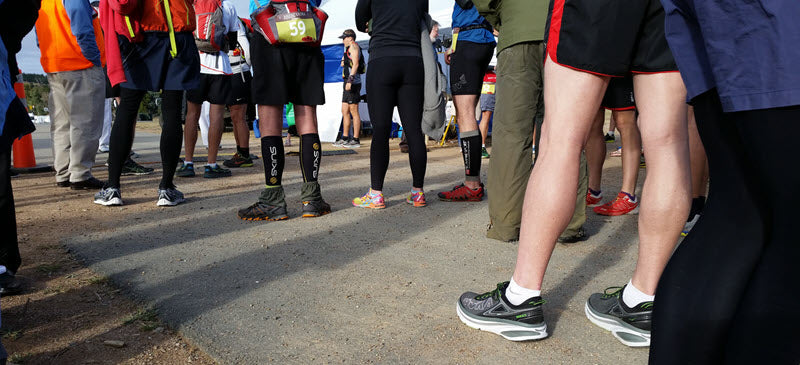
New Socks
Don't grab that new pair of socks you bought last week. Even if you know they should be better because they're more moisture-wicking or more cushioned (or thinner) than the brand you normally wear. Leave them at home. There might be something about them that doesn't suit your skin. Or they might take up a bit more room in your shoe and squash your toes together ever-so-slightly. Are you really happy to chance it on a new pair of socks - after all the training you've done and money you've spent to get here?
Race Day Preparation Checklist
A week before the race, check the weather forecast and double-check you have everything you're going to need on race day. Keep an eye on the forecast for any changes as race day inches closer.
Then, the day before your race, lay everything out and check each item off. Your checklist will depend on how long your race is, how far away it's taking place, and a bunch of other variables. For example, you may need to organise drop bags, travel and accommodation, and crew for an interstate ultramarathon. But here's an example of a local marathon day checklist, with marathon blister prevention a key focus:
Marathon Day Checklist
- Shoes (broken in and comfortable and with blister preventions applied eg: Engo Patches)
- Insoles or orthotics (check they're in your shoes)
- Socks (one's you've trained in, check they're not threadbare in important areas)
- Other worn/applied blister preventions and anti-chafing products (eg: tape, lubricant, powder)
- Running shorts or tights (weather-appropriate)
- Running shirt
- Lightweight jacket or arm sleeves (for cold weather)
- Running bra
- Hat or visor (to shield from sun or rain)
- Sunglasses
- Race bib (provided by the race organisers)
- Race belt or pins for attaching your bib
- GPS watch, phone or any other tech (including portable charger if necessary)
- Sunscreen (sweat-resistant and high SPF)
- Sweatband, headband, hair-ties
- Energy gels or snacks (must not be new to your tummy)
- Water bottle or hydration pack (if not provided along the course)
- Portable phone charger (if you plan to use your phone for music or tracking)
- Post-race shoes (thongs/sandals), change of clothes, towel
- Identification (ID card, driver's licence)
- Cash or card for emergencies or post-race purchases
- Medical information (if necessary, such as allergies or existing conditions)
- Any necessary medication
- Race map or course information (if necessary)
Remember to check the weather forecast in the lead up to race day and adjust your clothing and accessories accordingly.
And most importantly, trust in your training and planning, and enjoy the race day experience!

The Real Life Perils Of Breaking The Golden Rule Of Race Day
Attending multi-day ultramarathons, I see the real-life results of breaking the golden rule of race day. One that comes to mind was a runner who literally pulled his new running shoes out of the box and wore them for the first time on race day, and his toes suffered the consequences. Although they were the exact same brand and style that he usually wears, the toe box obviously hadn't stretched, conformed or softened-up to accommodate his toes like his old faithfuls. This was a 6-day ultramarathon, so these new toe blisters on day one, were not exactly conducive to a personal best. It was a rookie mistake, from a veteran who I'm sure knew better. That's why I'm writing about this - these basic things are easily overlooked, or not prepared for in time before the big day, leading to preventable injury. Our feet are often the last things we think about.
Causes And Prevention Of Race Day Blisters
Your blister history is an undeniable tool every person should be using to their advantage as they plan for a big event - be it a marathon, a hike, a holiday or your wedding. I call it "blister intel". If you've had a blister in a certain spot on your foot, you're more than likely to get that blister again, especially if your activity changes in some way. This is why training and getting used to your shoes is so important.
However, sometimes you can follow the golden rule of race day to the letter, but still get a foot blister. My American colleague, Doug Richie DPM, has participated in foot care at the end of marathons on many occasions. He has shared with me his thoughts on why some runners swear they've never had a blister in a particular location on their foot, they haven't broken the golden rule of race day, and yet they get this new blister. Doug suspects participants run a little faster on race day due to the adrenaline of the event and all the runners around them. It's easy to get caught up in the excitement and push yourself harder than you did in training - there's the incentive of a personal best and perhaps even your race time being published.
King of ultramarathon race day foot care in the US, John Vonhof of Fixing Your Feet has shared many examples of runners wearing threadbare socks on race day. This is at the opposite end of the "golden rule" spectrum. When you wear your old favourite, perhaps even "lucky" socks on race day, but they have compressed down and maybe even worn through, this area of the sock offers you no protection at all and may even be an irritant.
So, you need to find the middle ground. You don't want "brand new", but you also don't want "worn out". Find your happy medium which will allow you to put your best foot forward on race day.
Dealing with Blisters on Race Day
Different sports, events and activities present their own set of in-the-moment blister management challenges.
Marathon blisters
The specific challenge of dealing with a marathon blister is, you don't have time to stop (the race is too short), and you're not carrying anything on you (not like a hiker on a similar duration day hike). This is why predicting your most likely blisters, and having the most effective marathon blister preventions in place before you get to the start line, is so important. Predicting your most likely blisters involves:
- Your own blister history - If you ignore this, you are less likely to finish your race blister-free.
- Anywhere you have callouses - Callouses and blisters are caused by the same forces.
- Your structural and functional characteristics - You can see a podiatrist to help determine any additional areas at risk.
Ultramarathon blisters
If you are taking part in a multi-day ultramarathon, the above still applies. But you may have drop bags or even crew that can help you top up preventions (like lubricants which need frequent reapplication), add new preventions if hotspots develop, and treat blisters. The longer the race, the more likely you are to have time, and access to gear like a blister kit, another pair of shoes, or a change of socks. If you have crew, and particularly if you are blister prone, consider enrolling in Fix My Foot Blisters Fast. It's a mini-course that will update your understanding of blister causes and management, so you know you're doing the right thing for your feet mid-race.
Hiking blisters
If you're planning a big hike, you have the advantage of wearing a backpack and carrying necessary blister gear with you. Whether you want to pack light and carry the absolute minimum, or you're blister-prone and want to have access to a lot of gear to keep your feet happy, there are a range of blister kits to suit. Take a look at what's available and build your own if you want to.
Fundraising event blisters
Fundraising events like charity walks and fun runs often have foot care stations along the course. This is great, because it means you aren't burdened with the need to carry anything on you. But I would caution you against leaving it up to these lovely people willing to tend to your sweaty feet. They will only have access to the basics. Some antiseptic and a bandaid on your blister is important to prevent infection. But it doesn't go anywhere near far enough to stopping the blister-causing forces (shear) within your skin. They will not have access to gel toe protectors, Engo Patches, Blister Wool, or probably even hydrocolloids. So do your due diligence, get your blister preventions in place before you get to the start line, and keep your blister management in-house to the extent you are able. If you need help, take your own blister kit to the foot care tent and ask the medics to do x, y, z - they will be happy to take direction from you.
Your Last Opportunity For Blister Prevention
At the risk of stating the obvious, the aim is to start and finish your event blister-free. Do everything you can to predict your blisters, get the very best preventions in place before you start, and get a great blister kit. Because the very last opportunity you have for successful blister prevention is the hot-spot stage. The hot-spot sensation can be subtle, and it often doesn't last long. So when you get that early warning, you need to stop, drop and implement prevention then and there. To do this effectively, you need a blister kit and a plan. Don't keep going as you mull over in your head what you're going to do. You should already know, so as the famous footwear brand says...
Just Do It
Wrapping Up
The personal logistics involved in preparing for any athletic event is substantial. If you want to avoid blisters on race day, your feet need to be at the forefront of your mind, not an after-thought. If you want to experiment with a different prevention strategy, do it weeks/months before in your training. Whatever you do, follow the golden rule of race day and don't leave it to the start line to try something new.

